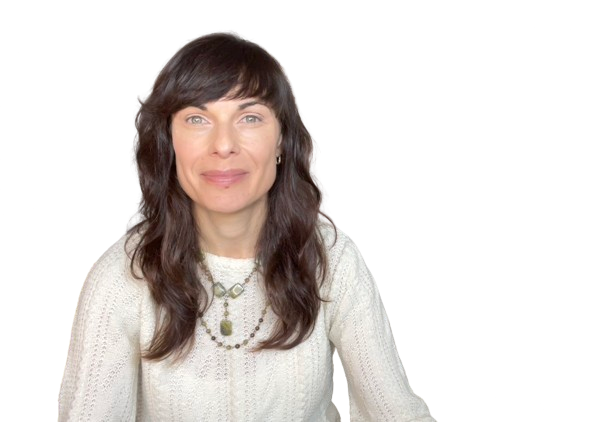I grew up in an anxious family, so for me, it was quite normal to worry about things and be overly concerned. As I continued to grow and learn, I realized it felt like too much and was very unreasonable at times. By majoring in psychology and learning more about anxiety, I’ve come to some conclusions. We all face it at some point or another in our lives, even if it’s mild. The key is understanding when it’s taking over and pulling you away from being present and connected.
Ways People Deal With Anxiety
Like many things in our society today, anxiety is seen as a problem and something to be fixed. The approach then addresses the symptoms rather than the causes, underlying issues, and deeper meaning. This creates a culture of people who end up somewhere between suffering, pushing it away, avoiding it completely, or focusing on the superficial ways to “fix” it that only provide band-aid, short-term solutions.
When you cope with your anxiety through avoidant behaviours, it makes it stronger. For example, imagine you struggle with a phobia/fear around dogs and then ensure you are never around them. This tells your brain that you are safe when you are not around dogs, reinforcing the avoidant behaviour. When in reality, the anxiety and fear are in your mind, body, and spirit trying to tell you something. There is pain, discomfort, and wisdom in your anxiety, and how you engage with it is what matters the most.
Another common way of dealing with anxiety is attaching a story to it. If you approach your anxiety from a story angle, then you will always need reassurance. Ie. I’m anxious because I don’t do well in crowds. Instead of looking at what it is about crowds, that creates anxiety.
However, if you look deeper into the story and shift your awareness, understanding, and meaning of that story, then you have an opportunity to transform and grow. Anxiety is the bridge between the conscious and unconscious mind. It is rich in messages, and when guided through a process of discovery and curiosity, these messages can be gems in healing past traumas, beliefs, and barriers.
Essentially, it’s a matter shifting from seeing anxiety as a burden or problem to seeing it as a gift and opportunity to transform. Especially for those who are highly sensitive, attuned to their body and surroundings this can be overwhelming and seem burdensome. However, it’s also a gift to be so connected to yourself, your mind, body and spirit. It just takes practice to listen and learn.
Four New Ways To Approach Anxiety
Sheryl Paul writes in her book “The Wisdom Of Anxiety” that it’s important to approach anxiety from an inward place and stresses these four elements:
- Curiosity – take distance from the intense feelings and emotions that come up and observe with curiosity. What is it telling me? When did this start? What was I like before it happened? This will help you approach it from a learning and kindness angle rather than judgment.
- Compassion—This means having loving and kind self-talk. It’s accepting where you are without judgment and being present enough to know it won’t last.
- Stillness – When we are in high-speed mode, it takes us away from our bodies, being aware of our thoughts and noticing what triggers us. Being still slows everything down, helping us catch vital information that can play a role in our transformations.
- Gratitude – I talk about having a gratitude journal often and the overall benefits it has on our well-being and mental health. Here, gratitude means being grateful for what our anxiety tries to communicate and the role it plays in our growth.
Our ancestors used anxiety as a way to keep us safe in nature. Now, for most of us, we no longer need this form of anxiety. However, our brain still wants to protect us from danger both physically, emotionally, and spiritually. We are told from multiple sources like social media, the news, religion, community, family, and friends that there is something wrong with us that needs to be fixed. Other messages we are bombarded with are those of fear, division and danger. All that gives the undertone of not being able to trust ourselves or others. No wonder we are dealing with a pandemic of anxiety!
With this constant message of “there is something wrong with you” comes the striving to be normal and always happy—both of which are false. We are human, and that means experiencing a wide array of emotions, feelings, and life experiences. Life is about growing rather than being perfect. It’s about learning, expanding, and experiencing life in a way that allows us to connect to our true selves, and sometimes, that means being anxious.
Transition is something else to consider when looking at anxiety. I noticed this all the time when I was a teacher. Students had difficulty transitioning from one subject to another or one space to another. For example, coming in from recess, settling down, finishing a class, and changing locations to another classroom. These are the small transitions we encounter on a daily basis, and without paying attention to how they make us feel, we miss out on crucial information about our anxiety.
Then, there are the larger changes in our lives. This can also bring on depression if we are stuck in the grief of the change and loss. For example, moving from being a student at university to working full-time in a 9 to 5 job. These need our attention to be processed, held, grieved, and learned from. Otherwise, they sit inside of us unexpressed, which can later lead to depression.
What Normal Anxiety Looks Like
We get anxious when we don’t have the tools for a future situation. And that’s because we don’t actually know what we will need at that moment because it hasn’t happened yet. We tend to worry about something that is related to a specific situation or problem, this is totally normal! When this happens it lasts only as long as the situation or problem.
Normal anxiety is realistic and proportional to the situation or problem. It makes sense to be concerned to a degree based on the problem (i.e., starting a new job). These are all situations with many unknowns, and they are realistic responses to a real problem or situation. Worries are in the form of thoughts, and they actually help us solve complex problems. The issue is when we get stuck in this worry cycle, the thoughts become repetitive, and they dominate our life, making it hard to function.
When Anxiety Takes Over
The red flags for when anxiety has become more than thoughts and nervousness to solve a specific problem are:
- Anxiety may come up unexpectedly for seemingly no reason
- The anxiety response to a situation or problem may be much stronger than they would expect
- They may experience a lot of unrealistic anxiety, such as fear of a situation that likely will never happen
- Anxiety may last for a long time, even when the situation or problem has been resolved
- Anxiety may feel impossible to control or manage
- They may avoid situations or things that they believe trigger anxiety symptoms
If this is happening to you then it’s best to speak to a counsellor, therapist or healer who can help you navigate through these emotions, thoughts and feelings. Then to make a plan of how you will address it in a practical and healing ways.
Now What?
A way to get started is to take an inventory of what’s changed. Some great questions you can ask yourself to get more clarity and direction on how to engage with your anxiety are:
- What was your lifestyle like before your anxiety took over? How has it changed in the way you spend your time and the things you do?
- What are your beliefs around your fears, and do you justify them?
- What changes in behaviour have you noticed since you had these repetitive thoughts?
- How have your thoughts changed toward your fear? What were they like before?
Take some time to journal using these questions and then share your findings with someone you trust who can hold space for you. Naming the fear is HUGE because it makes it less scary and gets it out of your head and frees you from the vicious cycle of thoughts. Remember to take things one step at a time and see the gifts of anxiety.
Reference/Resource: Sheryl Paul writes in her book “The Wisdom Of Anxiety.”

Tonia Cordi is a decluttering trauma coach and teacher who works with people who want to change, grow, and heal. Her five-step process allows individuals to declutter their lives, reconnect with themselves and their life purpose, and heal from trauma. You can learn more about her approach on her website or YouTube channel.






